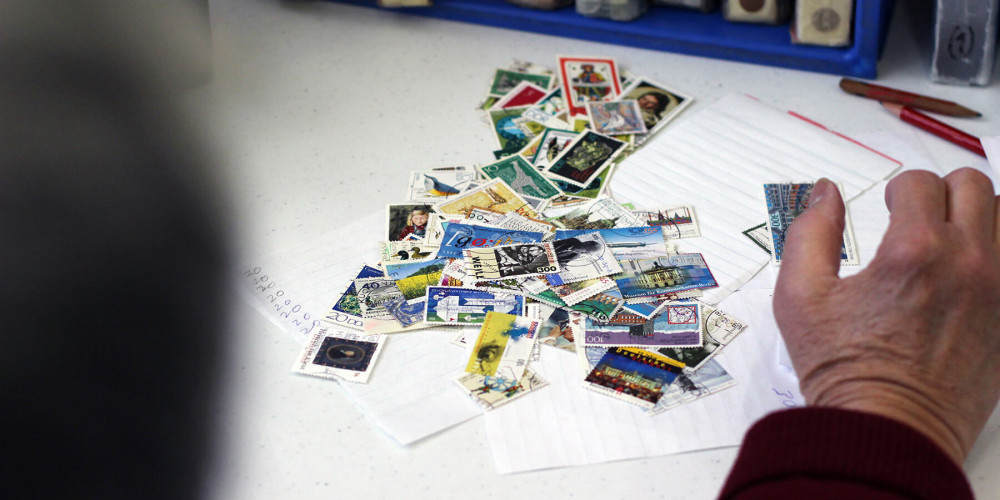KIT Blog
How your stamps can stamp out leprosy
I recently attended a Stamp Fair held at the Burwood Heights Uniting Church in Melbourne. It was a sunny day. The carpark was full. Inside was quite the crowd. Some were in deep conversation with old friends. Others were leaning over albums, peering through thick magnifying glasses at selected findings, amassing piles of stamps that they wanted to buy. A canteen to the side was offering cakes, biscuits, coffee and tea. Community art decorated the walls.
There are three of these sales a year at the church. They help raise money for several charities. Each stamp fair raises between $700 and $800. The next one is in February and you’re invited to pop along. It’s an open invite. Anyone can attend. Stamp collecting is for everyone.
I was invited to this fair by our friend, John Baker (pictured above with Jenny). He’s a regular at The Leprosy Mission Australia office. John’s a stamp collector, though he stopped collecting privately five or six years ago. He’s also the president of the Blackburn Missionary Stamp Club. John has been with the club for over forty years, helping to raise money for The Leprosy Mission Australia.
At least once a month, John arrives to collect the stamps that have been sent to our office, and drop off any donations that his club is making. Every time he collects there is usually at least one stamp that is highly collectible.
It doesn’t matter whether stamps are “franked” (stamped by the Post Office) or from other countries. Australian stamps are more collectable only because there are more Australian collectors. John says the stamps from Asia are highly sought-after. He says that “people come in and buy the whole book. They want all of them. The whole lot. There is obviously a very big demand in [Asian] countries for their stamps.” The club currently has around 120 albums for stamps of other countries. Special issues, like Christmas stamps, are sorted into additional categories. Stamps that aren’t as collectable are still valuable. They’re often sold by the weight as “bulk”. Last year bulk generated $2,900 for people affected by leprosy. John is hoping to make even more this year.
One of John’s jobs in the club is to buy collections. If the club can buy a collection for a good price, they can resell it for a decent profit. John has had his fair share of hit and misses though, so it’s best left for the trained eye. Years ago, he bought a collection from Geelong for a couple of grand. There seemed to be some highly collectible stamps in the collection—a ten shilling kangaroo, a pound kangaroo and a two-pound kangaroo—but upon review of the purchase they turned out to be reissues of the same stamps, printed recently in the 80s or 90s. They were worth next to nothing. John’s advice to other stamp collectors: “buy carefully.” Though buying and selling can be rewarding, it’s not without risk.
Last year, John received four legendary “Christmas Stamps of 2015”, they were put up for auction and raised $280.
How you can help stamp out leprosy this Christmas
Gifting stamps for people affected by leprosy is a nifty way for you to get rid of old collections or have a hobby that helps others. You can drop them off at The Leprosy Mission Australia office or send them in the mail. John says his club will accept any stamps and in any way—in albums, free floating, stuck to envelopes, or trimmed a couple of millimetres around the stamp.
“They come to us in all sorts of ways and we take them.”
—John Baker, President of the Blackburn Mission Stamp Club
You can help raise money for people affected by leprosy simply by sending in your stamps to The Leprosy Mission Australia at 37-39 Ellingworth Parade, Box Hill, VIC 3128.













